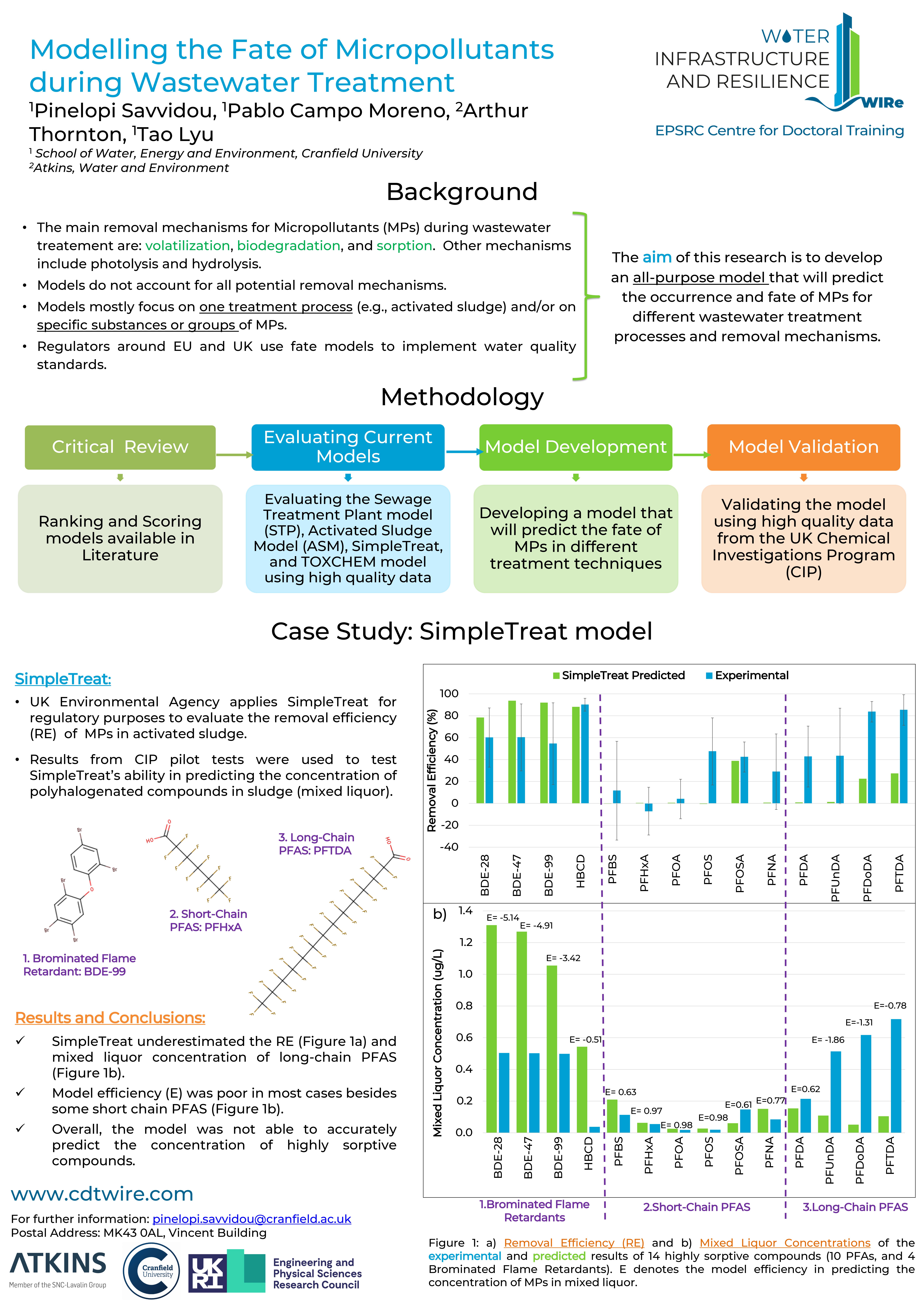Meet Pinelopi Savvidou
Email: Pinelopi.Savvidou@cdtwire.com
Academic and Industrial affiliations: Cranfield University, Atkins
Title of research project: Wastewater Integrated Selection Environment: A UK Model comprising regulation, resilience and sustainability

Concerns for the impact of micropollutants (MPs) on the environment from treated wastewater have increased, hence the implementation of tighter regulations leading to high removal efficiencies in discharged effluents. Most countries require for MPs to be assessed for their treatability in the sewage treatment plants (STP). Hence, models of chemical transport and fate in an STP are required.
Although models exist since 1990, current versions fail to predict the fate of complex MPs such as PFAS. Additionally, these models focus on one treatment or take into consideration a specific removal mechanism. The most studied treatment is the activated sludge process (ASP) with or without primary settling. ASP models determine MPs removal via biodegradation, volatilisation, and sorption. Nevertheless, other mechanisms such as cometabolic degradation, abiotic hydrolysis, compound oxidation and reduction, desorption and compound retransformation are not considered. Moreover, the addition of tertiary treatments (e.g., activated carbon filtration and advanced oxidation processes) also requires the update of current fate models.
The aim of this research is to develop an all-purpose model capable of predicting the fate of MPs for different wastewater treatment processes and removal mechanisms. Hence, a critical review of the current models will be conducted followed by the evaluation of the most used ones for their ability to predict the fate of complex MPs such as PFAS and polybrominated compounds. Then, a model will be developed with features that allow the user to a) choose between activated sludge process and membrane bioreactor treatment, b) to predict micropollutant removal considering more than the three main removal mechanisms (biodegradation, sorption, and volatilisation), and c) for the user to choose on tertiary treatments. The model will be accordingly validated by using data derived from the National Chemical Investigations Program.

